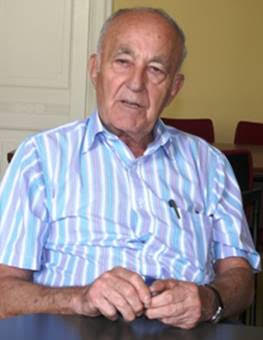
THE VOICE OF INTERNATIONAL LITHUANIA
|
VilNews has its own Google archive! Type a word in the above search box to find any article.
You can also follow us on Facebook. We have two different pages. Click to open and join.
|
Lithuania today
- Posted by - (2) Comment
Small towns in today’s Lithuania:
CRIME AND DECAY
 |
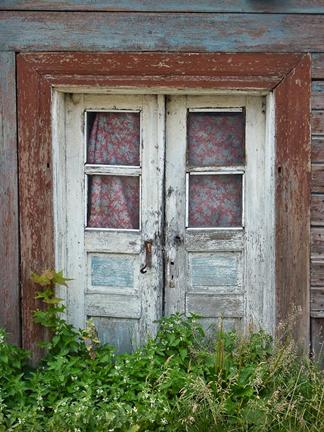 |
Many of Lithuania's small towns suffer from decay and increasingly severe crime cases
Text: Aage Myhre, VilNews Editor-in-Chief
Every third year or so I go to visit some acquaintances in one of Lithuania's small towns. A few days ago it was again time to see these exceptionally friendly, nice people, and my little family and I were as always very much welcome guests at the home of our small-town friends when we arrived at the gate in front of their house.
When we last were there, in 2007, this was a family and a society that seemed to be in peaceful harmony. A little sleepy, yet idyllic atmosphere prevailed in both the home and the small town at that time.
No longer so.
“Criminal gangs appear to be about to take over in such a way that we, the law-abiding citizens no longer feel safe neither in the streets nor in our homes. Last night, for example, we were out at a restaurant just ten minutes walk from our house. When it was time to go home, it was already dark outside, and as the situation here has become so bad over the past couple of years we dared not walk, we felt we had no other choice than to take a taxi the few hundred meters back to our home. "
She speaks softly, sad and with deep seriousness in her voice as she explains the situation to us, this gentle woman who has lived in this town all her lifetime. Here she gave birth to and raised her now grown children who have given her great grandchildren whom she talks about with great pride in her voice, still expressing deep concerns on how it will be for them to experience an environment like this during their years of childhood and youth.
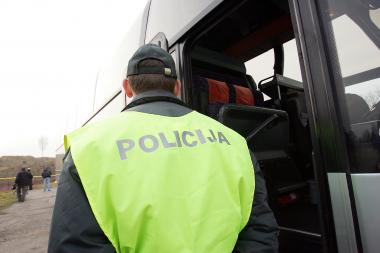
"Worst of all," the woman continues, "is that these criminals seem to no longer worry if they are being seen or discovered. Many break-ins in the houses around here happen in broad daylight, and it seems as if the police no longer have control of anything in our dear village.
A neighbour who came home to his house a few days ago was met outside his own front door by a stranger coming out of the house. ‘What are you doing here,’ our neighbour asked. ’ Well,’ replied the stranger, ‘what I had to do, I've already done.’ When our neighbour went in, he understood what the stranger had meant. The house was just completely stripped of all valuable items."
When I asked her what the police do in cases as the one she had just described, our acquaintance just scoffs. She no longer has respect for the police, judiciary or politicians in this country, she says, and more than suggests that many of them probably get a share of the cake from the many thefts and assaults taking place right in front of their noses.
I have, after we left our acquaintances, been trying to find out if the problems she describes about her hometown could also apply to other towns in this country. The answer is, unfortunately very discouraging, confirming that her hometown is not unique with regard to rapidly increasing crime and lack of respect for law and order.
What can we do to make life for this proud, bright woman and the many other law-abiding people around this great country a little safer and brighter again?
It is not up to me to answer, but both our President and our Prime Minister should take this problem seriously before the situation gets even more out of control.
The cancerous tumour is growing every day that passes...
The visit to our acquaintances in one of Lithuania's many small towns made a strong impression on me. When we drove out of town I saw in a new light the buildings, streets and the few people who were out this late afternoon. I saw that my former somewhat romantic view of this rural town was wrong. Or at least not complete. I saw that many of the houses were in decay and that very little had happened since I first came here 20 years ago.
And when I think about it, isn’t this the situation for the majority of Lithuania's small towns? They have not received their fair share of EU funds or investments that made Vilnius and partly the other major cities flourish.
Heritage is about to be lost. Buildings and outdoor environments disintegrate. People are suffering. Criminal gangs are gaining better footholds.
Is this the Lithuania we want to have? Of course not. But it is now. We, the people care about this country, living here or elsewhere on the globe, must begin to take action. It's all up to us, is it not?
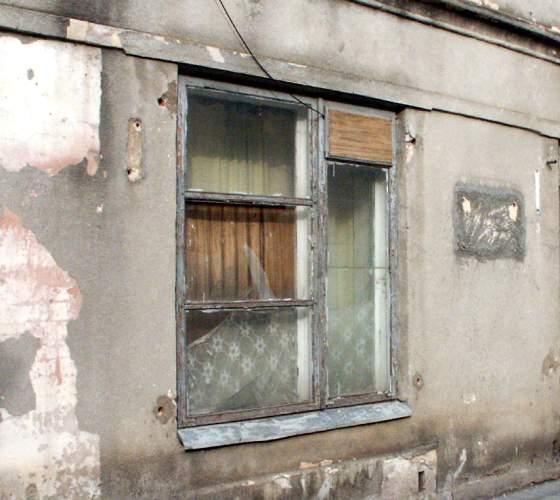
- Bookmark :
- Digg
- del.icio.us
- Stumbleupon
- Redit it
Arrogance, ignorance & an airport comparison
- Posted by - (2) Comment
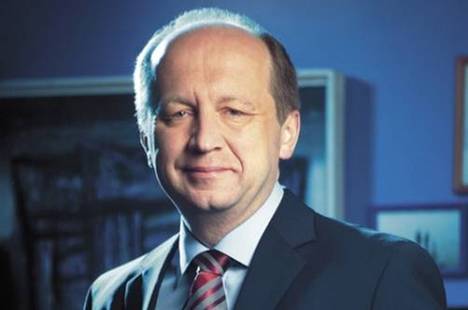
Lithuania’s Prime Minister, Andrius Kubilius.
Arrogance and ignorance are not particularly positive characteristics of anyone, and I understand it well if some of our VilNews' readers, who see that I use these words together with a picture of our Prime Minister, predict that I will now be criticising him. So let me hurry to say that these two words are meant for all questionable behaviours seen performed by our governing forces since 1990, not solely for Mr. Kubilius.
I must admit that I over the past 20 years have seen a few Lithuanian leaders whose arrogance and belief in their own excellence in some cases have prevented progression and good development for Lithuania. Still today I miss leaders who are good at listening to their own Lithuanian people, wherever in the world they may live, and I miss leaders able to inspire and be unifying figures and good examples for the nation they are appointed to serve. Leaders able to lead, not only manage.
I have also very much been missing to see our leaders seek advice from other countries and its own diasporas; to learn from mistakes and experiences these nations went through during the years when Lithuania was still under Soviet rule. Instead, time after time, we have seen Lithuanian leaders trying to reinvent the wheel.
PM Kubilius' profound measures for savings and cuts during the very serious financial crisis Lithuania still experiences, is for me an example of just that. In my opinion, the type of medicine he has been using is to compare to putting the brakes on for a car that already stands still, or closing the tap when the well is already empty.
Countries in Scandinavia and North-Western Europe have the background and resources to make cuts. Lithuania and other Eastern European countries are, after the long Soviet-era economic mismanagement, not in such a fortunate situation. Here most of the resources should have been spent on finding new fuel for the car and fresh spring water for the well.
Being a Norwegian, I believe Norway and the other Scandinavian countries would have been willing to stretch to great lengths to provide help and advice for the crisis-hit Lithuania and the two other Baltic States. But they had to be asked.
Our Lithuanian leaders should refrain from arrogance and avoid ignorance by seeking advice where good help and advice is to find, domestic and internationally. Can they do that, there is every reason to foresee a bright future for this nation.
The Lithuanian people deserve exactly that. They have suffered enough.
The airport comparison

Vilnius Airport’s terminal building from 1954 was built during Stalin’s last years.
It still remains the airport’s main face towards Vilnius City.
To make my above point more understandable, I will in the following compare post-war Lithuania to Vilnius Airport. Why? Well, they have more in common than you may think; metaphorically, symbolically and representatively for what has been going on here from WWII till today.
The old airport terminal was built in the years after the war, in typical Stalin style characterised by robust constructions and materials very hard to remove. The building was completed a year after his death, in 1954. After that, the airport remained more or less unchanged through the following 40 years, with Soviet Aeroflot as the sole operator until Lithuania's independence in 1990/91.
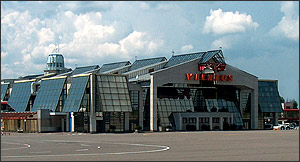
The airport was extended in the 1990s. This is the ‘monster’ that for many
years greeted (scared) airline passengers who came to visit independent Lithuania.
In the early 1990s, the airport was starving for total renewal. A public face and symbol of the now free, independent and internationally oriented Lithuania was urgently needed. The new airport should become the pride of the new democracy and an important hub for international airlines that one thought would bring hordes of visitors to the country. Not least was it estimated that the majority of the many who had emigrated to America, Australia and other countries now would move back to their homeland and contribute actively to the country’s reconstruction.
It was therefore not long before the airport management and the transport ministry chose a group of architects and other experts to travel around the world to look at leading international airports. The airport in Vilnius should be designed on a top global level. Back in Vilnius the architects drew day and night on what would become the country's new pride, and a couple of years later the 'masterpiece' was completed.
But what a tragedy. The architects and the airport authorities had in their arrogance and self-delusions of excellence thought that to visit some prominent international airports would be a good enough background for designing and building the new terminal building. They had not bothered to seek advice from international experts. The result became a new Vilnius Airport that was confusingly similar to misguided Soviet designs, and came to be viewed rather negatively as ridiculous by the international travel industry.
The 'airport monster' in Vilnius emerged not as a glorious example of a great country developing well, as it had been planned, rather as a symbol of a country where arrogance and ignorance prevented from learning important lessons from other countries.
And it's probably just here we find the most obvious similarity between the past twenty years’ development of the airport and the country's authorities; this that those at the helm have been so convinced of their own excellence that they haven’t cared to seek advice from others.
This can, of course, to a certain extent be understood, as this country through so many years was imposed to 'advices' from others that they no longer wished to accept any outside help when the new times came.
Probably that was why we in the 1990s got a parody of an airport. Perhaps this ‘blinkers mentality’ is also a contributing factor to why this country's population still suffers from the excessive and unfair tightening measures introduced by the government, rather than enjoying stimulus packages of the kind that are leading people in other countries through the crisis along a far more smooth path?
Maybe the ongoing ‘evacuation’ from this country has much of its background in such arrogant attitudes from the side of the authorities? Maybe people would like to become part of a democratic process and a national teamwork instead of being treated with arrogance and lack of interest from their own leaders?
The airport-building from the 1990s was supposed to appear as modern, as avant-garde. Those behind it were proud of their own excellence. Seen from the outside the building appeared, however, as a parody. Many of Lithuania’s leaders over the past 20 years are surely also proud of what they have achieved. But what about the people?

In 2007 a new extension stood ready. The previous ‘monsters’ were now hidden
behind modern materials and design. Lithuania’s face to the world had finally
reached a level of maturity, hiding many of the old sins. Unfortunately only artificially.
When the 2000s arrived it began to be understood by Lithuania’s leaders that membership in the EU would not only entail benefits, but that they also had to do something for their own part, and when the Schengen Agreement was under preparation it became clear that the Vilnius Airport had to be extended. This new construction was performed quickly and efficiently. There could be no doubt that both the country's architects and contractors had learned very much since the 1990s.
So, what characterises Vilnius Airport now in 2011?
A) The core element is still a building in Stalin Style. It is also this old building's façade that appears towards the side of Lithuania and it is on this side that the taxi drivers still do their best to cheat naïve foreigners and others. The Soviet legacy is still very solid and evident in this country.
B) On the side facing the runway and the international world, there was in the 1990s conducted an ultimately unsuccessful attempt to make a building that both functionally and symbolically should be a showcase of the proud new democracy. This travesty of a building, that so well symbolizes Lithuanian authorities’ thinking for the period 1990-2007, is now hidden between the Stalin-building and the new glass building that was completed in 2007. But the parody was not torn down, and you still have to run up and down the strange
stairs, in and out of corridors and funny corners, in a maze of steel, concrete and glass produced with Soviet
technology. What should have been a prominent symbol of the new democracy was instead made a monument of stupidity, greed and lack of transparency.
The airport in Vilnius will not function well if this section is not removed completely. Lithuania will not function well until the greed culture established by its leaders of the 1990s is totally removed.
C) In the 2000s, the building from the 1990s was tucked away between the Stalin building and a new extension that was much better adapted to modern requirements and design ideas. But also this new building is just to a certain degree characterised by measures necessary to make the airport functional and representative of modern times. To mix old and new can often be complicated. To hide old sins behind new façades is more artificial than a sign of real improvements.
So the parallels between Vilnius Airport and post-war Lithuania are quite obvious, aren’t they?
The essential question then, is obviously what is now needed to achieve real change? My opinion is that there as soon as possible should be built a new airport where neither Stalin nor the monsters of the 1990s are given space or influence. We need a solid world-class airport as a proud new symbol of a progressive country - with outstanding leaders and project managers in charge – leaders accepting neither arrogance nor ignorance, neither during the planning and construction phase nor during the operation period.
My comparison between the airport and the nation is still valid. Perhaps, now, the idea of openness and transparency, plus the ability and willingness to listen and learn from others, would not be too bad an advice?
Aage Myhre, Editor-in-Chief
aage.myhre@vilnews.com
Arrogance, ignorance or…?
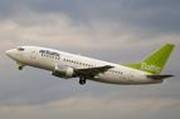
Airport and hotel taxes almost killed
the tourism industry.
When Kubilius' government took over in late 2008 they decided to keep the country’s airport charges at a very high level, and to triple the VAT for hotel accommodation. The result was that several international airlines dropped Lithuania as a destination and the number of travellers and hotel stays fell dramatically. Tens of thousands lost their jobs, and the country lost much needed tax dollars.
2009 was the year when Lithuania celebrated its 1000-year name day. It was also the year when Vilnius was the European Capital of Culture. Despite those positive incentives, the number of visitors to Lithuania became far lower in 2009 than in 2008, primarily due to the government's decisions described above. In 2010, however, the airport fees are reduced considerably and the airlines are finally returning, one year late. But what a sad story isn’t this, for a whole industry and the country.
![]()
What austerity looks like
The New York Times writes about Lithuania from time to time. Their article from 2010 presents a good and balanced analysis of what's happening in our crisis-ridden country. It says that Kubilius' comprehensive savings measures now appear to give results as the decline in the economy has stopped, but the article also tells of a nation where the people are suffering more and more because of these measures:
These are two of the phrases from the article:
- “Faced with rising deficits that threatened to bankrupt the country, Lithuania cut public spending by 30 percent — including slashing public sector wages 20 to 30 percent and reducing pensions by as much as 11 percent. Even the Prime Minister, Andrius Kubilius, took a pay cut of 45 percent.”
- “The psychological toll has been immense. Suicides have increased in a country where the suicide rate of 35 per 100,000 is already one of the world’s highest, local experts say.”
You find the NYT article at: http://www.nytimes.com/2010/04/02/business/global/02austerity.html
- Bookmark :
- Digg
- del.icio.us
- Stumbleupon
- Redit it
“You foreigners are extremely naïve”
- Posted by - (0) Comment

Plans to do business in Lithuania? It's like navigating
a boat in shallow water full of reefs.
"What you, who are born in the West, see when you come to Lithuania, are people who look like you, talk like you (those who speak Western languages) and are quite much alike you in many other aspects. But the reality is that we who have grown up in the Soviet Union or Eastern Europe have a totally different mentality than you. Even those Lithuanians who fled to the West during the war do not understand what the Soviet era has done with the mindset of us who were forced to grow up under the yoke of communism."
A Lithuanian friend told me this a few days ago. The talk began after he had expressed some surprise at how naive and gullible we from the West are when we come to Lithuania.
"You think that a word is a word, that a deal is a deal. You think that things here are going straight as in the West. You believe that what you hear is what is said, and you trust that people you meet really want and mean to do what is good, honest and correct.”
“Therefore, it doesn’t take much before you open up your cards and often reveal business secrets and other things that you should never have disclosed without first having secured your situation with contracts and local supporters, i.e. lawyers. We Lithuanians are experts in taking advantage of such situations, and we never cease to wonder how gullible people from the West often are. Even within international companies and organisations I am sometimes surprised to see how unaware western professionals are about what goes on behind their backs when they come here," said my friend.
I asked him if this mentality also means that people here do not care much about their own country, doing good for the society in addition to earning a living for themselves. "Only to a small degree," replied my friend. "It is such a difficult situation for most here that there is no additional capacity or desire to also care about the nation. Even our leading politicians do not. Most of them are much more concerned with their own interests than of the nation, and they are normally bad role models for the rest of us. So why should we do more than them?"
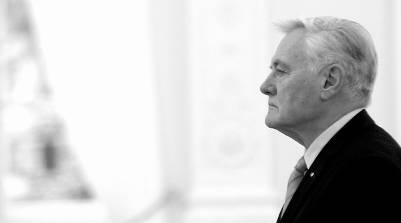
"I was born in this country. I fought for this country. I gave everything I
could, both while I lived here and after I was forced to flee to the United
States. I moved back here when Lithuania was again free, and have since
continued to do my best for this country, including through my years as
President. Yet I must admit that I feel like an outsider in my own country."
The sadness in the voice of former President Valdas Adamkus was
unmistakable as he stood and looked towards the Vilnius city through
the windows of his Presidential Palace.
I cannot fully agree with my friend. Yes, there are differences, but also so many similarities and common grounds to build on. But his statements made me think about a conversation I had with the former Lithuanian President, Valdas Adamkus, a few years ago. He was then well into his second and last presidential term, and we had a long and good conversation at his office in the Presidential Palace in Vilnius. When the conversation was over we went together out into the corridor outside his office, where the windows are facing the Cathedral and the central area of Vilnius.
My last question to the President, in that corridor, was about how close he felt he had come to the Lithuanian people after he returned from the United States in the early 1990s. This is what he answered:
"You know, Aage, I was born in this country. I fought for this country. I gave everything I could, both while I lived here and after I was forced to flee to the United States at the end of World War II. I moved back here when Lithuania again was free, and I have since continued to do my best for this nation, including through my years as President. Yet I must admit that I feel like an outsider in my own country."
The sadness in the voice of former President Valdas Adamkus was unmistakable as he stood and looked towards the Vilnius city centre through the windows of his Presidential Palace.
Aage Myhre, Editor-in-Chief
aage.myhre@VilNews.com
- Bookmark :
- Digg
- del.icio.us
- Stumbleupon
- Redit it
- Posted by - (1) Comment
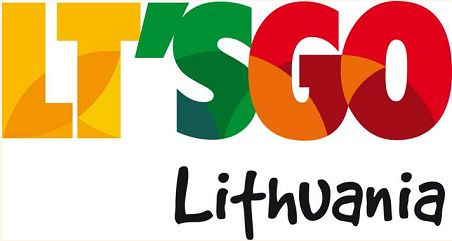
THE GREAT NARRATIVE OF LITHUANIA
(An Odyssey of Hope)
LIETUVIŠKA STRATEGIJA 21 A. LIETUVAI
(Vilties Odisėja)
Terms of Work
REBUILDING LITHUANIA ON THE ROCK OF ITS HISTORY, CULTURE, AND FAITH
A TRIBUTE TO THOSE WHO’S BLOOD AND BRAINS MADE FREE LITHUANIA POSSIBLE
Valdas Samonis
Institute for New Economic Thinking, USA
SEMI Online, Globally
SEMI Online
Punskas-Vilnius-Toronto-New York
Copyright by Valdas Samonis & SEMI Online 2011.
I started my research, thinking, and other work on Lithuania during my first high school years in Punskas, Poland, in the mid 1960s prior to my arrest, expulsion from school, as well as my long-term persecution and harassment by the communist security services for my anti-Soviet and freedom-to-Lithuania activities. Since that time, I encountered many people globally to whom I owe a lot of great inspiration and enlightenment in connection with this work, for details please see the Acknowledgements section below.
ABSTRACT. After the period of the development-retarding Soviet occupation and a frantic/chaotic search for systemic solutions in the 1988-2010 freedom-seeking, Lithuania badly needs a fresh and original approach to its socioeconomic system and its due place in the new global economy. This fresh approach, the innovative Great Narrative of Lithuania (GNL) is a qualitatively new global presentation of Lithuania; GNL will use modern economic and management theories and will be rooted in the original and unique overall Lithuanian experience assessed against the background of the world’s (esp. European) experience.
With stagflation, gyrating financial imbalances, recurring asset price bubbles, primarily in the advanced economies but also in emerging markets, there is a rapidly growing need to learn from past crises and attempts at transformations in order to boost the necessary confidence (find a new hope) and to avert or minimize new crises using the most modern knowledge management approaches, innovate in business/economic models and critical areas of institutional/systemic solutions. This is of importance globally and specifically for Lithuania as it moves away from its attempts at traditional comparative and competitive advantages to “softer” aspects of more advanced development involving new sources of those advantages and new institutions/systemic solutions that probably will be a creative blend of the Scandinavian, some Anglo-Saxon (e.g. Canada), and even Asian models (e.g. Singapore, China).
THE GREAT NARRATIVE OF LITHUANIA
REBUILDING LITHUANIA ON THE ROCK OF ITS HISTORY, CULTURE, AND FAITH
STAGES OF WORK: e-books, e-portfolios, e-cases, internet portals, modern presentations/papers, books, etc
INTRO
ECONOMIC RECOVERY OF LITHUANIA IN THE LIGHT OF THE LATEST THEORIES: Lessons from the Great Recession 2007-10 and Global Transformations;
THE MAIN BODY OF WORK
LESSONS FROM THE DEVELOPMENT HISTORY
Falling Behind: Retarding and Distorting Effects of the Soviet Occupation
Attempts at Traditional Catch-Up in Lithuanian Development 1989-2010
Demographic Change of Lithuania: A Modern Interpretation of the Destiny
The Crucial Issue of Governance in the 21st C Societies; Lessons for Lithuania
LATECOMER’S ADVANTAGE: COMPETITIVE AND COMPARATIVE ADVANTAGES OF LITHUANIA IN THE NEW GLOBAL ECONOMY, A Modern Knowledge Management Approach;
PRESENTING MODERN LITHUANIA TO THE WORLD: The Great Narrative of Lithuania;
VOX POPULI-VOX DEI: THE VIRTUAL INTERACTIVE THINK TANK FOR LITHUANIA, A Modern Digital Collaboration for Permanent Wisdom Sourcing (from Lithuania, Diaspora, and other FOLK: Friends of Lithuania of all Kinds);
NEW HOPE: NEW LITHUANIAN POLICY PARADIGMS: Scandinavian and Global Orientations.
ACKNOWLEDGEMENTS
REFERENCES
- Bookmark :
- Digg
- del.icio.us
- Stumbleupon
- Redit it
- Posted by - (1) Comment

|
Klaipeda was substantially covered in our VilNews editions |
|
Sunday 17 July |
||
|
KLAIPĖDA – the jewel in the amber crown |
Friedricho Pasažas – the new wonder of Klaipėda |
|
|
History of Klaipėda
|
Mare Suebicum |
|
|
Monday 18 July |
||
|
KLAIPĖDA MAYOR:
|
Radisson Blu Hotel, Klaipėda:
|
|
|
Tuesday 19 July |
||
|
Western Shipyard – from Soviet colossus to European greatness
|
Lido Marine – a Norwegian success story in Klaipėda
|
|
|
Wednesday 20 July |
||
|
KLAIPĖDA FREE ECONOMIC ZONE:
|
Next time you eat bacalao* in Spain or Italy |
|
|
Thursday 21 July |
||
|
Klaipedos Nafta has one of the most up-to-date oil terminals in Europe
|
The port of Klaipeda
|
|
|
WITH BOTH OIL AND LNG IN KLAIPĖDA:
|
||
|
Friday 22 July |
||
|
MEMEL CITY – A NEW 'CITY' AT KLAIPEDA'S SEA FRONT
|
4 trucks full of books every week
|
|
|
Saturday 23 July |
||
|
JAMES ANDREW CLARKE:
Click here to read the article
|
KLAIPĖDA SCIENCE And TECHNOLOGY PARK:
|
|
|
Sunday 24 July |
||
|
From Suriname to Klaipėda International Business Club
|
Klaipėda – a pioneer municipality in combating violence against women
|
|
- Bookmark :
- Digg
- del.icio.us
- Stumbleupon
- Redit it
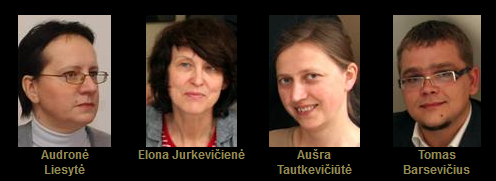
The Klaipeda Municipality tem planning the new crisis centre for women:
Ms. Audronė Liesytė, Head of Social Care Division
Ms. Elona Jurkevičienė, Head of Project Division
Ms. Aušra Tautkevičiūtė, Chief Specialist of Construction and Infrastructure Development Division
Mr. Tomas Barsevičius, Chief Specialist of Project Management Subdivision, Project Division
One of the biggest problems that Lithuania faces today is violence against women. Statistics claims that 63% of all women in Lithuania suffered from physical and/or psychological violence, whereas world average is 33%. In my interview with Klaipeda’s Mayor Vytautas Grubliauskas earlier this week, I asked him if he thought Klaipeda could be a good example for other Lithuanian municipalities with regards to this very severe problem.
The mayor answered:
“Thanks to funds from Espersen Foundation, Klaipėda becomes a pioneer in this social blind spot. What we will see with rise of this building, however, is not a problem solution, only a shelter for severe societal problems. Although the shelter is extremely needed, Klaipėda will never be an example if violence will persist. Therefore I see immediate need for social evolution towards extermination of violence against women in general. For that we need awareness campaigns and education from early school age. Only with such package of measures I will be able to call Klaipėda as good example for other municipalities.”
Lithuania's port city has for years had a women's shelter for women, but has now taken a huge step forward and is already well underway with the planning of what is probably going to be Lithuania's most modern and advanced crisis centre for women. The new centre is expected ready by 2012.
The municipality has been joined by EU and a Danish fund, the Espersen Foundation, to finance the project, and everything is now arranged for Klaipeda to have a women's shelter most other Lithuanian municipalities should study further as soon as possible. For the problem of violence against women is an extremely serious, nationwide problem that needs immediate attention from authorities, communities and the very families throughout every corner of the country!
Let me also say that I consider it admirable that the Espersen Foundation so actively contributes financially and otherwise in a community where the foundation's commercial arm, the Espersen Fish Factory, during the last few years has built up a state of the art fish processing company that provides jobs to a large number of production workers and several external companies within fishery, transportation and more. Klaipeda has for years benefited from this company's investments, and the company is now in an exemplary way also showing how commercial businesses can demonstrate social responsibility and involvement in the communities in which they are established and located.
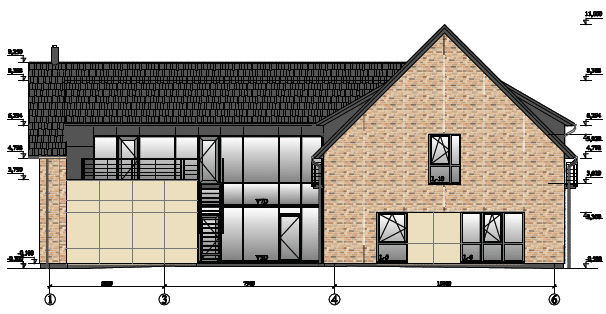
FAÇADE OF THE PLANNED CRISIS CENTRE BUILDING
Architects: NEOFORMA, Klaipeda.
Aage Myhre
aage.myhre@VilNews.com
- Bookmark :
- Digg
- del.icio.us
- Stumbleupon
- Redit it
- Posted by - (1) Comment
KLAIPĖDA SCIENCE AND TECHNOLOGY PARK:
Progressive thinking and innovative ideas!
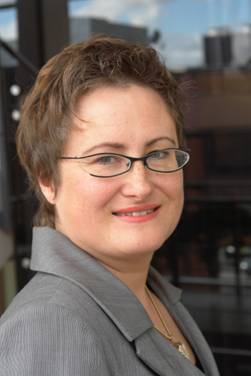
Klaipeda Science and Technology Park
Director Roma Stubrienė
“By opening the door of the Klaipeda Science and Technology Park (KSTP) we intended to gather under one roof enthusiasts of successful development from Klaipeda city and all western Lithuania: progressive thinking students full of innovative ideas, post-graduates, entrepreneurs and their enterprises in order to enhance the collaboration between science, industry and other branches of economy as well as development of high technology sectors. We hope to interest the visitors of our internet site in our activity and encourage them to collaborate in development of an innovative environment and innovation based economy in the Klaipeda Region.”
- Roma Stubrienė
The Klaipeda Science and technology Park (KSTP) is a mediator between science and business structures. Its task is to enhance communication between science and businesses, increase the level of entrepreneurship and promote development of knowledge based economy in the Klaipeda Region.
The Klaipeda County is one of the leaders of Lithuanian economy; it is among the three most powerful counties according to the GDP per capita, material and direct foreign investments as well as the average salary. More than 80% of the gross domestic product of the region is produced in Klaipeda City. Considering the potential and perspective of the region, it is necessary to ensure successful competitiveness by enhancing innovation culture, organizing transfer of knowledge and technologies and synergetic business communication.
Gathering under the roof of KSTP enthusiasts of successful development from Klaipeda City and all western Lithuania, progressive thinking students full of innovative ideas, post-graduates, entrepreneurs and their enterprises will help to enhance collaboration between science, industry and other branches of economy as well as development of high technology sectors. The KSTP plays an important role in creation and promotion of the city and region image and distinction and it also sets innovation culture traditions in the region. Therefore, the activity of the Park ensures social connection of science and business institutions: creates the necessary environment for knowledge and technology exchange, sets favorable conditions to provide high value added services, and promotes the scientific and industrial potential of the region.
Read more at www.kmtp.lt
- Bookmark :
- Digg
- del.icio.us
- Stumbleupon
- Redit it
- Posted by - (7) Comment
|
MEMEL CITY – A NEW 'CITY' AT KLAIPEDA'S SEA FRONT "A completely new face of Lithuania"- Mindaugas Žilinskas, Chairman of the Board, Memelio miestas |
|
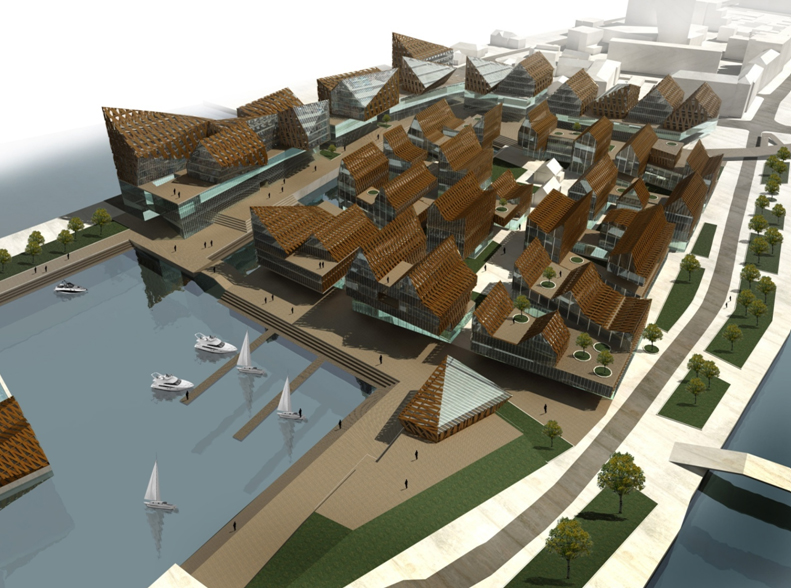
Memel City will be an immensely attractive seafront development in the Klaipeda harbour, at the Dane River mouth.
Memel City is a new ‘city’ planned built in the port of Klaipeda at the very sea front. A fantastic, amazing project that well might change the face of Lithuania!
The area where the new 'city' will be built is still a part of the port area. Here are still cranes and old production halls, and there are still ships at the dock. But in a few years this will be the most exciting town imaginable in this country. It is even likely to be Lithuania's only seafront project ever.
Memel City will be located at the mouth of the Dane river. On the other bank is planned another project with some similarities to Memel City, though in a smaller scale. The projects will be tied together by a new bridge over the river, and they will together constitute a truly unique development for Klaipeda and Lithuania.
Memel City will include several new quarters with apartments, business, offices, shops, restaurants, a hotel, night clubs, SPA, casino and much more. The quays and the closest sea area will be available for small boats and yachts.
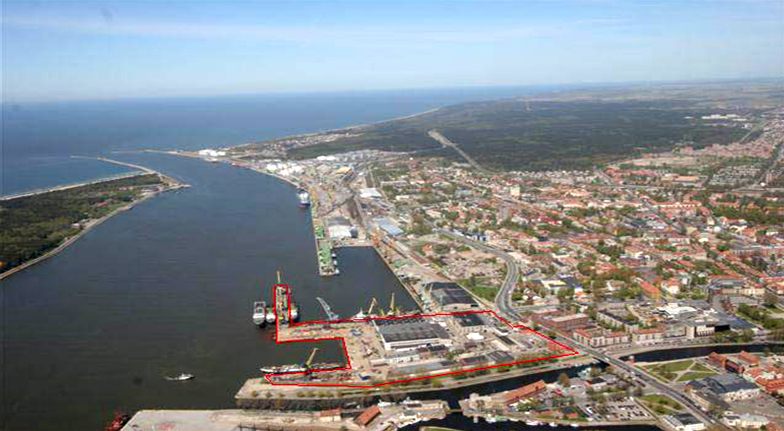
The whole territory covers 6,87 hectare, whereof 5,3 will be occupied by buildings and the rest remain as open green space, squares, outdoor restaurants and more – for joyful use and relaxation by visitors and inhabitants of the new ‘city’.
The ‘city’ will also include a seaside hotel with wonderful view to the Curonian Spit, the Lagoon, the Baltic Sea and Klaipeda city. The buildings will be constructed with 4 - 7 floors.
On the opposite side of the River Dane there is a newly renovated riverfront yacht harbour, old architectural buildings, the historic Klaipeda Castle, the cruise ship harbour - all attractive elements contributing with additional value and charm to the project.
Planned floor space:
Residential – 32.326 sq.m
Offices – 25.355 sq.m
Commercial – 19.308 sq.m
Hotel – 18.412 sq.m
Conference halls – 2.100 sq.m
SPA centers – 4.213 sq.m
Casino – 1.030 sq.m
Restaurants and cafes – 1.192 sq.m
Other – 2.389 sq.m
Reconstructed buildings – 453 sq.m
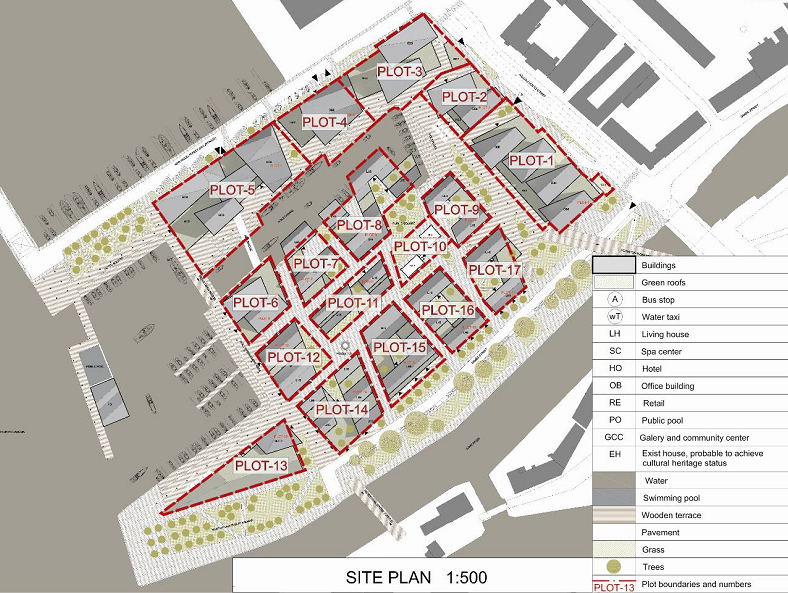
- Bookmark :
- Digg
- del.icio.us
- Stumbleupon
- Redit it
4 trucks full of books every week!
- Posted by - (1) Comment
Four trucks full of books, on around 1.000 pallets, leave the PRINT IN printing plant every week to Norway, Sweden, Finland, Denmark, Poland and local deliveries to Lithuania.
The PRINT IT printing plant in Gargzdai, a few kilometres south of Klaipeda city, is a Norwegian owned Lithuanian softcover book printer. They provide their clients with solutions for all sorts of printing needs at very compatible prices compared to Scandinavia and Western Europe, still without compromising on quality!
PRINT IT was established in Lithuania 18 May 2005, by Norwegian investors and experienced professionals from the Norwegian printing industry. The decision to operate out of Klaipeda, Lithuania, was based on location and low production costs. The location also provides excellent access to the key markets in Europe.
Since the start-up in 2005, PRINT IT has with a yearly production of 25 million books become a force to be reckoned within the European printing industry. The company has 70 employees and an EUR 12 million annual turnover. The printing machines, binders and the rest of the machine park, are all efficient and modern.
With exports accounting for more than 96% of the total production, PRINT IT is the largest pocket book producer in the Baltics.
PRINT IT is now expanding and is in the process of installing an additional web fed book press in order to produce large format soft cover. The new machinery will be fully operational by August. The new press will provide the plant with capacity to produce soft cover with height up to 21.5 cm. Combined with their two existing web fed book presses, the plant will now be able to fully utilize its bookbinding capacity.
Four trucks fully loaded with wisdom leaves Klaipeda every week. Soon there will be more...
- Bookmark :
- Digg
- del.icio.us
- Stumbleupon
- Redit it
- Posted by - (4) Comment
Klaipedos Nafta has one of the most up-to-date oil terminals in Europe
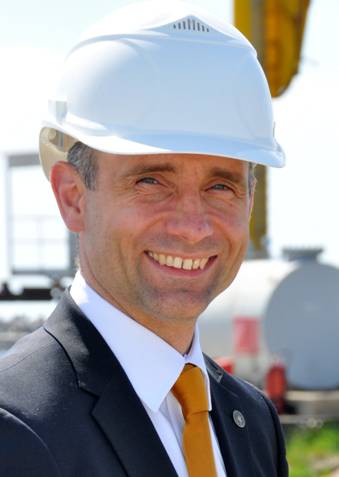
Rokas Masiulis, General Manager of Klaipedos Nafta
Rokas Masiulis interviewed by Aage Myhre
aage.myhre@VilNews.com
Rokas Masiulis has huge challenges, both behind and in front of him. As head of the giant oil terminal belonging to Klaipedos Nafta, he has had good success, and has this year also delivered remarkable economic performance for the company that in essence is owned by the Lithuanian State. Now it's planning and development of the increasingly well-publicized LNG terminal that lies in front of him. The president and the government have decided that the LNG venture will be a project of national concern, and as I’m in the process of writing this interview, the President herself is on a visit to Mr. Masiulis to ensure that the planning of the terminal proceeds 'by leaps and bounds'.
In the middle of the storm's eye Lithuania's oil-director still found time to answer my questions. His capacity is compelling...
“From your Klaipedos Nafta web page I have read that your company was founded in 1994, that it was entrusted the functions of reconstruction executive of the oil terminal which had been in operation since 1959 in the Klaipeda Seaport, and that your company became operator of the new terminal when reconstruction of the old terminal started in 1995, a reconstruction that was completed in 2002. The web page also tells that today Klaipedos Nafta is one of the most up-to-date oil terminals in Europe. Anything you would like to add about the company’s history? And please explain to our VilNews readers what the functions of an oil terminal like yours are all about?”
“SC Klaipėdos Nafta is a strategic enterprise of the Republic of Lithuania capable of unloading different oil products from rail tank cars into tankers and, when necessary, from tankers into storage tanks. SC Klaipėdos Nafta transports close to one third of all the cargoes shipped via Klaipėda Port. Our company is well known in handling so called “dark petroleum products” (fuel oil, vacuum gasoil) loading of which require special heating equipment. Our company also serves as a backup route for petroleum products import to the country in case supplies are cut from the east.”
“The Lithuanian State is the major shareholder of Klaipedos Nafta. Who are the other shareholders, and why are they involved?”
“The other shareholders comprise of joint stock companies and private persons, from which the largest is AB Achema, owning more than 9% of AB Klaipedos Nafta shares. The minority shareholders play a role as investors through shares free flow in Nasdaq OMX Vilnius.”
“You claim on your web page that experts from British Petroleum have reported positively about;
a. labour safety,
b. environmental protection
c. fire prevention means
of your Klaipedos Nafta Terminal, every year since 2001. After last year’s catastrophe in the Mexican Gulf, BP’s judgements are probably not that worthy anymore, but what can you in general say about the environmental and fire risks having a an oil terminal of this size located so close to a rather large city centre as Klaipeda is?”
“The Terminal focuses much of its attention on environment protection. Automatic fire detection and extinguishing system, computerized control system of the transshipment process, air, soil and water pollution prevention technologies fully satisfying the European standards have been introduced. Oily waters from the tankers being serviced at the Terminal are collected and treated in the modern mechanical and biological waste water treatment facilities.”
“SC Klaipėdos Nafta also pays great attention to the measures preventing air pollution with hydrocarbons. Vapour, emitted during technological process, recovery and combustion unit has been installed and is in operation where up to 98 per cent of volatile organic compounds, collected from the tanks of the vessels handled at Company’s jetties or from rail tank-cars during their loading, are being burnt. An advanced close discharge system is in operation. During loading – discharging of oil products tank-car hatches are covered with special caps with valves preventing hydrocarbon emissions into the air. Floating roofs, mounted in the storage tanks, reduce product evaporation and thus environment pollution.”
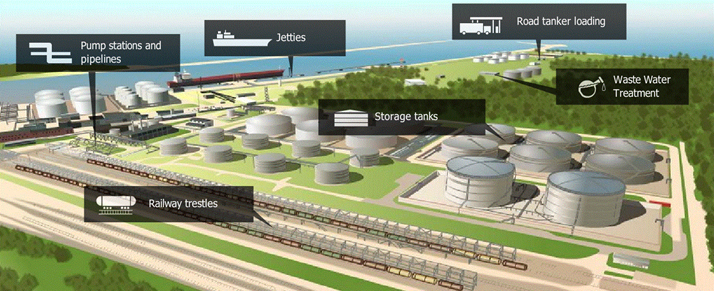
Klaipedos Nafta claims to operate one of the most up-to-date oil terminals in Europe, with the core activity to transship exported oil products from rail tank-cars into tankers, provide Lithuania with imported crude oil and oil products which are shipped to Klaipеda port by tankers.
“Last week you informed the Vilnius Stock Exchange that your profit rose 57 percent in the first half of this year due increased sales and dropped intermediaries. Net income rose to LTL 27.7 million ($ 11.4 million) from LTL 17.6 million for the first half of 2010. These are impressive figures?”
“Yes we can say a great job done through the first half of 2011. Increase of revenues during the first half of 2011 was influenced by significant factors such as successful functioning of the business model - operation without intermediaries, and after termination of a non transparent cooperation with UAB „Naftos grupe“ the Company gained about LTL 5 million (EUR 1,4 million). Additional earnings were achieved by applying increased transhipment tariffs; plus an implemented structural reorganization in the commercial sphere which added LTL 4 million (EUR 1,2 million) earnings from additional services rendered to the clients as well as successful sales in June of oil products recovered from bilge waters that brought LTL 5,7 million (EUR 1,7 million).”
“Your Lithuanian Government and President say they are ready to build a floating LNG (liquefied natural gas) terminal close to the Klaipeda port by 2014 to cut dependence on Russian gas and obtain access to the gas spot market. But I understand that the Latvians and the other Baltic neighbours are not all that convinced and will potentially decline to cooperate on this?”
“This question should be addressed to Lithuania Government and President but the main purpose to build LNG terminal in Lithuania’s security of supply which means we’re thinking of local terminal to cover Lithuania needs.”
“Your Klaipedos Nafta is in charge of the LNG terminal project. Last week you signed an agreement with Fluor Corporation , the largest publicly traded U.S. engineering company, as lead advisor on the planned terminal. You said that they will take over the project's management from July, expected to prepare the technical development plan and assist in selecting technologies, as well as working out a business plan for the terminal. The contract (so far undisclosed) with Fluor covers a period up to 2014, when you expect the terminal to come online. Please tell me more about the size and extent of this contract with Fluor and what they are supposed to accomplish?”
“Our selected lead adviser Fluor will cover financial, environmental, risk&safety, engineering and project management advice, as well as election of main parameters and support in negotiations to acquire FSRU, EPC contract. The LNG supply will be at their responsibility as well. As you see from activities listed above, Fluor will lead us through the whole project implementation period, i.e. 4 years. The contract price with them is EUR 9,229 million (excluding VAT).”
“You’ve also said in an email that Klaipedos Nafta plans the terminal to have a capacity of 2-3 billion cubic meters of gas per year, and that it will cost some EUR 200-300 million to build. Can you elucidate more on these figures? Maybe also exemplify a bit on how many gas tankers (ships) that will represent per year, etc.? And what about the environmental risks, pollution etc. having the LNG terminal located so close to Klaipeda city?”
“The main parameters are so far preliminary, so this is not the time to speculate. In 3-4 months, with Fluor advice, we will determine the main parameters and then we will have a vision of the business plan. Environmental impact assessment will determine any existing environmental risk, pollution and other risks. It is planned to have EIA report ready by the end of 2012. At the first glance it shouldn’t be a negative risk. There are several examples in the world where terminals are located very close to a city, i.e. Barcelona (Enagas).”
“The Government of Lithuania last week gave the projected LNG terminal the status of national importance, and the Cabinet approved the implementation plan, that will provide for speedier procedures of all the institutions involved in the project. This will force other departments to be more active in solving the issues related to land plots, EIA assessment and the involvement of the sea port in the project. The decision came after President Dalia Grybauskaite earlier had criticised the slow pace of the project. Does this represent lack of trust in Klaipedos Nafta’s handling of the project? What else can you say about your cooperation with the Government and the President?”
“We have to do pre-work to enter the more visible movement of the project implementation. I mean, there are lots of procedures and research to be done before engineering and EPC contracting can start, for example. SEIA, development plan, territory planning, marine research, EIA etc. have already been started. We are in close cooperation with the President, Government and other related institutions as we have at hand an ambitious national importance project.”
“How do you see the future for Lithuania’s energy supplies on the backdrop of the above? Do we really need a new nuclear power station, or will the LNG terminal and other sources be sufficient enough for this country by 2020?”
“It’s not our competence to comment on national energy strategy.”
Principle for the planned LNG terminal in Klaipeda

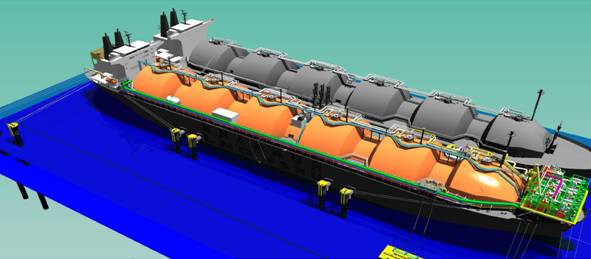
An FSRU (floating storage and re-gasification unit) will be moored to a pier (jetty) and every
arriving LNG carrier will be moored to the FSRU, side by side.
- Bookmark :
- Digg
- del.icio.us
- Stumbleupon
- Redit it
- Posted by - (2) Comment
WITH BOTH OIL AND LNG IN KLAIPĖDA:
Environmental risks?

The Kiaules Nugara (Pig’s back) island in the southern part of the Klaipeda port, at the border between the port and the Curonian Lagoon (to the left in the above illustration) is the most likely place to build Lithuania’s planned LNG terminal. This means that it will regularly sail large LNG tankers through the narrow strait between Klaipeda city and Neringa (which is now designated as one of the country’s national parks). How risky can it be to get a gas terminal and such a heavy sea traffic close to the big city that Klaipeda after all is? What about the explosion and fire risk? What about emissions and other forms of pollution? Is the water, beaches and fisheries in the Curonian Lagoon at risk? May Neringa and Klaipeda city be at risk?
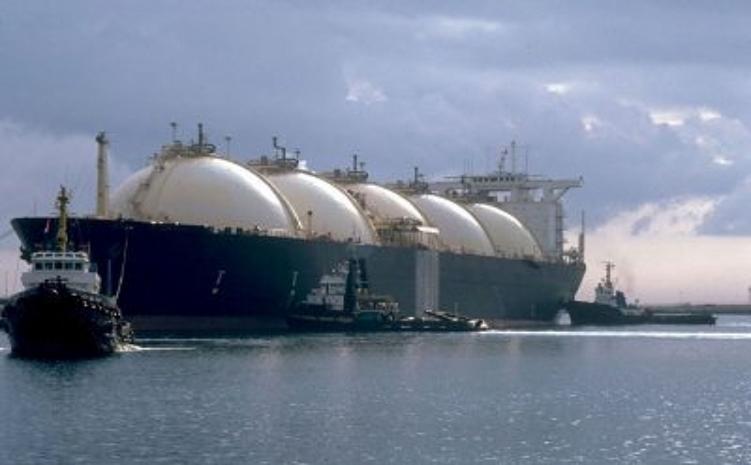
There are currently 235 liquefied natural gas (LNG) tankers in operation worldwide. New LNG tankers have an average capacity of three billion cubic feet, costing approximately EUR 180 million each. LNG tankers differ from traditional oil tankers in that their cargo, liquefied natural gas, must be cooled to extremely low temperatures (-160°C) and has slightly different characteristics than oil (including a higher propensity to burn). LNG tankers might be dangerous for environments and communities claims a new movie and web page: http://timrileylaw.com/LNG_TANKERS.htm
Principle for the planned LNG terminal in Klaipeda


An FSRU (floating storage and re-gasification unit) will be moored to a pier (jetty) and every
arriving LNG carrier will be moored to the FSRU, side by side.

Klaipeda port area is now very idyllic. Klaipedos Nafta's oil tanks (left in above photo) have certainly somehow changed this picture over the latest years, but that will be trifles in comparison to the situation that will be applicable when the LNG terminal at the inner end of the strait is completed in 2014. Let's just hope that all possible precautions are taken, and that neither LNG, oil, nor the tankers carrying the gas and oil will have negative or risky effects for Klaipeda, the sea or the beautiful, surrounding landscapes.
Aage Myhre, Editor-in-Chief
- Bookmark :
- Digg
- del.icio.us
- Stumbleupon
- Redit it
The port of Klaipeda
- Posted by - (2) Comment

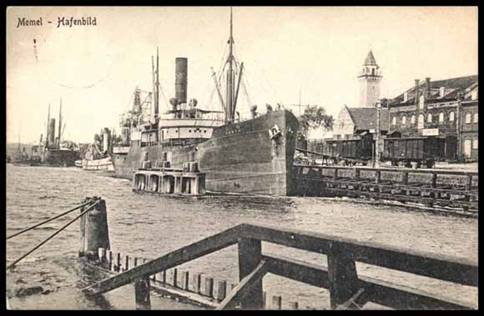
The history of Klaipeda seaport started already the summer of year 1252 when the Curonian bishop and the vice-regent of Livonian Order signed the agreement about Klaipeda. This agreement was approved by the ruler of Lithuania, Mindaugas (one year before he was crowned King of Lithuania). Following this agreement Klaipeda Castle was built. In the small port neighboring the castle, vessels of Lubeck and Bremen merchants used to moor.
In the middle of the 16th century Klaipeda rivals, the inhabitants of Danzig, overloaded the Dane port with stones (!), therefore till 1820 only small vessels could call the port.
In 1743 the first timber trade office was founded in Klaipeda, and the port became the most famous timber trading port in the Baltic Sea.
The chronicle of 1797 mentions that Klaipeda port consists of the Dane river port and a big water basin in the strait of the Curonian Lagoon. Timber was handled in the port, accommodating more than 300 vessels at a time.
The period of 1924-1939 was a period when Klaipeda port was at its flourishing peak – new quays were constructed and various companies started to operate, Lithuanian Shipping Company was founded, and the young state of Lithuania invested into the development of the port not less than 42 million litas.
In 1963 the first renewed Sea Festival took place. Today this festival has become the most important public event in Klaipeda.
In 1986 the new International Ferry Terminal was constructed. The Terminal was constructed for serving Soviet Army, located in Germany, and the biggest-in-the- world rail-ferries started to operate.
On June 3, 1991, following the order of the Minister of Transport and Communications, the state enterprise Klaipeda State Seaport Authority was founded and since 1993 it started managing the state-owned port infrastructure.
Klaipeda State Seaport is the northernmost ice–free port on the Eastern coast of the Baltic Sea. It is the most important and biggest Lithuanian transport hub, connecting sea, land and railway routes from East to West.
Klaipeda is a multipurpose, universal, deep-water port, providing high quality services. 15 big stevedoring companies, ship repair and ship building yards operate within the port as well as all types of marine business and cargo handling services.
The annual port cargo handling capacity is up to 40 million tons.
The shortest distances connect the port with the most important industrial regions of the Eastern hinterland (Russia, Belarus, Ukraine etc.). The main shipping lines to the ports of Western Europe, South-East Asia and the continent of America pass through Klaipeda port.
The port operates 24 hours a day, 7 days a week, all year round.
IMPORTANT
More than 800 economic agents are directly related to the operations of the port of Klaipėda. The port and the enterprises related to its operations provide more than 23,000 jobs and 4.5% of the Lithuanian GDP. Because of the port operations, approximately 185,000 jobs are created. The port of Klaipėda is directly or indirectly related to 18% of Lithuania’s total GDP.
ICE-FREE
An ice-free port that does not freeze even during very cold winters guarantees smooth traffic and uninterrupted stevedoring operations. As the port of Klaipėda is situated at the junction of international transport corridors, it is a bridge between the Commonwealth of Independent States and the countries of Asia, the European Union and other markets.
MODERN
Between 1993 and 2006 the Klaipėda State Seaport Authority and the stevedoring companies operating in the port allotted 2 billion Litas (600 million Euro) for its modernization. 1 billion 215 million Litas (350 million Euro) should be invested in the years 2008 to 2013.
The Klaipėda port is rapidly developing and sets out ambitious plans for further expansion
DEEP-WATER
The depth of the entrance channel is 15 meters. The depth of the port navigation channel is between 13 and 14.5 meters. Therefore, the port can accept large-tonnage vessels: dry-cargo vessels up to 80,000 DWT, and tankers up to 150,000 DWT.
In 2004 the Japan International Cooperation Agency (JICA) conducted a prefeasibility study on Klaipeda State Seaport development.
INTERMODAL
The port of Klaipėda is the leader among the ports of the Baltic Sea in terms of container handling. Its well-coordinated operations of sea and hinterland transport, the Free Economic Zone (FEZ), the EU short-sea shipping network, and the wide-range operation of logistic and industrial enterprises ensure the operations of intermodal transport.
An innovative logistic product in the Baltic States, the container and contrailer train Viking,connects the markets of the Baltic Sea and the Black Sea regions from the port of Klaipėda per Minsk, Kiev to the ports of Odessa and Ilyichevsk.
ACTIVE
The port of Klaipėda is a member of four international organizations.
It is a regular organizer and participant in inter-state negotiations on transport matters, and international transport exhibitions and conferences.
SAFE
Requirements of the International Ship and Port Facility Security (ISPS) Code, Regulation No.725/2004 of the European Parliament and the Council and Directive 2005/65/EC have been implemented in the port terminals, territory and port waters.
INNOVATIVE
The latest information system called KIPIS (‘Creation and introduction of an information system for cargo and commodities shipped via Klaipėda State Seaport’) speeds up cargo traffic via the port of Klaipėda, strengthens the competitive advantage of the port, and facilitates the operations of ship’s agents and forwarders. The KIPIS system ensures the exchange of electronic data between businesses and institutions operating in the port during the course of cargo-handling procedures.
The port operates a GIS (geographic information system), which enables users to use geographic data and facilitate the provision of information efficiently.
CERTIFIED
The operations of Klaipėda State Seaport Authority are certified in compliance with the ISO 9001:2000 Quality Management Certificate and the ISO 14001:2004 Environmental Protection Management Certificate.
|
KLAIPEDA PORT RECORDS
THE LONGEST QUAY in Klaipėda port, Quay no. 144, is 460 meters long.
The Quay No. 143 is designed for highest (maximum) loads.
VESSELS
THE LARGEST CRUISE LINER – length 294 m, width 32.2 m and draught 8.3 m – was the vessel “Constellation” sailing under the flag of Bahamas called at Klaipėda port for the first time on the 1st of June 2005.
THE LARGEST TANKER – was the vessel “Tour” (length 274.47 m, width 48.04 m, draught 17.022 m) first berthed in Klaipeda port on 10th of March 2008.
THE WIDEST CONTAINERSHIP WITH THE LARGEST CARGO CARRYING CAPACITY – was the vessel “MSC Fortunate” (length 274,67 m, width 40 m, draught 14 m, maximum TEU capacity - 5551) – berthed in Klaipėda port on 1th of March 2011.
THE LONGEST CONTAINER SHIP - was the vessel “MSC Sariska” (length 294,12 m, width 32,28 m, draught 13,5 m, maximum TEU capacity - 4814) – berthed in Klaipėda port on 23th of May 2011.
THE LARGEST RO-RO SHIP – was the vessel „Hoegh Delhi“ (length 199.9 m, width 32.26 m and draught 8.81 m) first berthed in Klaipėda port on 26th of November 2009.
THE LARGEST QUANTITY OF TRANSPORTED CARGO – 91 779.86 t – by the tanker “Isi Olive” (length 274 m, width 48 m, draught 15.22 m), which entered Klaipėda port on 22nd of August 2008.
THE LARGEST AMOUNT OF POTASSIUM FERTILIZERS – 77 832.079 t – by the bulk carrier “Aghios Makarios“ (length 228.6 m, width 43 m, draught 12.85 m), departed from Klaipėda port on 20 of January 2010.
The largest number of cruise ships – 65 CRUISERS arrived in 2007.
The record annual NUMBER OF VESSELS – 8348 ships called at Klaipėda port in 2008.
The largest number of VESSELS per month – 872 ships visited our port in September 2008.
In 2010 Klaipėda city was visited by the largest number of PASSENGERS – 320 991.
The largest number of passengers per month was recorded in August 2007 – 49 183 tourists.
In 2007 cruise ships brought the largest number of TOURISTS to Klaipeda port – 36 866.
In August 2007 cruise ships brought the largest number of passengers per month – 11 745 tourists.
CARGO TURNOVER
The highest annual CARGO TURNOVER was recorded in Klaipėda port in2010 – 31.277 million tons.
The highest cargo turnover per month was recorded in May 2011 – 3.25 million tons.
The highest annual TURNOVER of LITHUANIAN CARGO was recorded in the port in 2010 – 18.75 million tons.
The highest annual TURNOVER of TRANSIT CARGO was recorded in the port in 1993 – 13.24 million tons.
The record for annual turnover of FERTILIZERS was recorded in 2010 – 8.66 million tons.
The highest turnover of FERTILIZERS per month was recorded in May 2011 – 1.054 million tons.
The record for annual turnover of OIL PRODUCTS was achieved in 2008 - 9.36 million tons.
The biggest volume of oil products handled per month was recorded inJanuary 2009 – 952.54 thousand tons.
The record of annual turnover of CONTAINERS was achieved in 2008 – 373 263 TEU.
The largest number of containers per month was recorded in May 2011 – 46 627 TEU.
The highest annual turnover of RO-RO CARGO (including rail wagons) was recorded in 2010 - 228 730 units.
The record figures in monthly turnover of Ro-Ro cargoes (including rail wagons) was achieved in May 2011 – 22 603 units.
- Bookmark :
- Digg
- del.icio.us
- Stumbleupon
- Redit it
- Posted by - (2) Comment
KLAIPĖDA FREE ECONOMIC ZONE:
A magnet for international companies
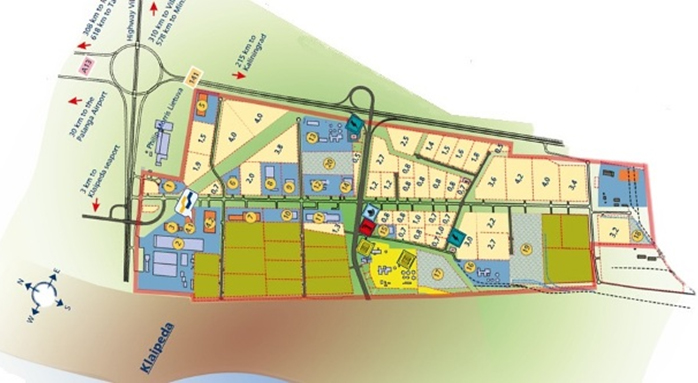
The Klaipėda Free Economic Zone (Klaipėda FEZ) was established in 1996 and opened officially in 2002. FEZ offers tax incentives to qualified investors that invest at least 1 million euros. In 2008, due to overcrowding the zone was expanded from 205 hectares (510 acres) to 412 hectares (1,020 acres) of developed land. As of March 2008, before expansion, FEZ had 22 investors: seven were operating, one just finished construction, six were under construction, and others in development stage. Web page: www.fez.lt E-Mail: info@fez.lt
The Klaipeda Free Economic Zone (FEZ) was the first and is still the only fully functioning free economic zone in Lithuania. The two companies that first started operations in the zone was the Japanese company Yazaki Wiring Technologies Lietuva, and the Danish company A.Espersen A/S, which opened their fish processing factory here in January 2003. FEZ was established to provide favourable conditions for the development of business activities by offering a prepared industrial site with a ready physical and juridical infrastructure, support services and tax incentives.
The 412 hectares area is located in a strategic position, close to the port of Klaipėda and with well developed connections to rail and road. Palanga International Airport is located only 30 km from the FEZ.
The Klaipėda FEZ has signed agreements with 20 foreign and Lithuanian capital firms, of which 16 are already operating. Since its inception, there has been invested more than LTL 792 million and created more than 1.000 jobs in the zone. The Klaipeda FEZ is recognized an ‘importance for the state project’.
During the last eight years, approximately 400 million Euros has been invested here. Business is carried on here by 16 companies from countries of Western Europe, Asia, and Scandinavia. Another four companies have already commenced construction or design works.
The Klaipėda FEZ has been recognised as an economic project of state importance. Such status of the zone ensures a favourable attitude of authorities in solving any issues that may arise.
In 2010 the Klaipėda Free Economic Zone took part in a world ranking for free economic zones, organised by the “FDI Magazine” belonging to the “Financial Times” group of publications. Out of 700 world free economic zones, which participated, the Klaipėda FEZ took 20th place. In the category ‘facilities’ the zone took 5th place.
The first in Lithuania
Klaipeda Free Economic Zone is the first and leading free economic zone in Lithuania. The advantages of setting up a business here became especially apparent after Lithuania joined the European Union in 2004. Based within the security of doing business within the EU it provides an excellent point from which to explore the vast Eastern, Western, Scandinavian and Russian markets.
Tax incentives
Companies investing in the Klaipeda Free Economic Zone will have considerable benefits in terms of no or reduced profit tax, no tax on dividends for foreign investors and no real estate taxes. These tax incentives in the Klaipeda Free Economic Zone are regarded as state aid for regional development, and therefore comply with European Union regulations.
• 6 years’ exemption from corporate income tax following made investment and 50% discount for the following 10 years –for companies that have invested more than €1 million
• No real estate taxes
• No taxes on dividends paid on foreign investments
Management
The Klaipėda FEZ is managed by a separate company that provides clients with all the necessary services in order to make the process of setting up easier and faster. The company provides the following services:
– consultations on establishing and registering enterprises and setting up businesses in the zone;
– issues permits for activities in the zone;
– informs about EU structural support opportunities for the client’s investment projects
– helps the clients’ construction and other project vs. authorities
– provides temporary start-up offices and services
– provides contacts to reliable and verified service providers and contractors.
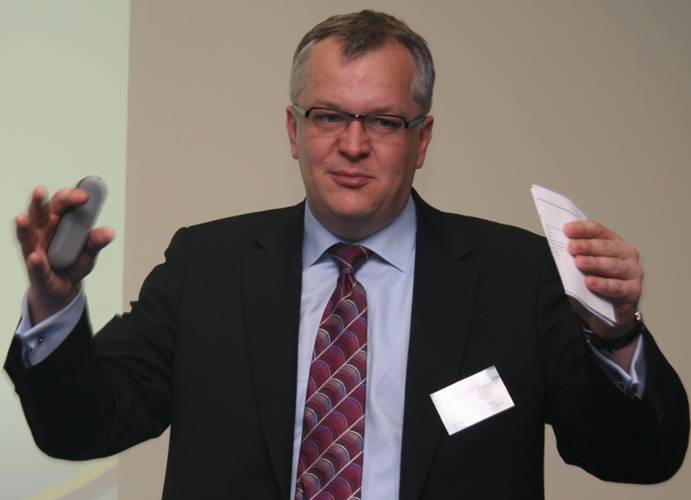
Director Eimantas Kiudulas of the Klaipeda Free Economic Zone (FEZ).
How to become a Klaipėda FEZ enterprise?
• Contact the FEZ management company by e-mail at marketing@fez.lt or by phone at +370 46 312163. Complete the investor’s questionnaire at www.fez.lt.
• Introduce your investment project, agree on the terms and conditions of doing business in the zone and sign an agreement with the Klaipėda FEZ Management Company.
• Obtain a permit for activity in the zone from the zone management company.
• Register a zone enterprise in the register of enterprises.
• Take on a sublease from the FEZ management company for a land plot or lease premises for doing business in the zone.
• Present to the tax administrator an auditor’s report, proving the amount of capital investment as prescribed by the law.
Current companies established in the zone
Klaipeda FEZ has signed agreements with 20 companies, of which 16 are operating. Their activities cover production of plastic pellets, logistics and storage, bio-diesel, electronics, appliances, architectural glass, steel constructions and a range of services.
Four new companies are now preparing their business activities in the zone:
Fortum, Heidelberg Cement, AB Ship and Nordetanolis.
Currently based in the Klaipeda FEZ are the following companies:
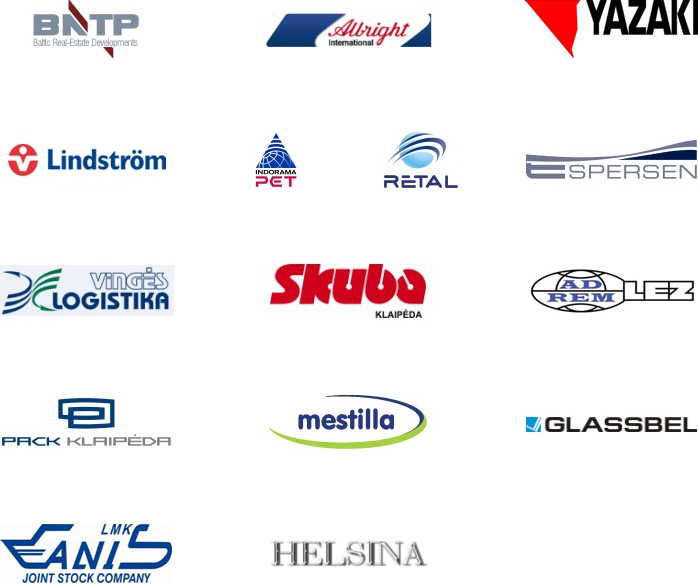
- Bookmark :
- Digg
- del.icio.us
- Stumbleupon
- Redit it
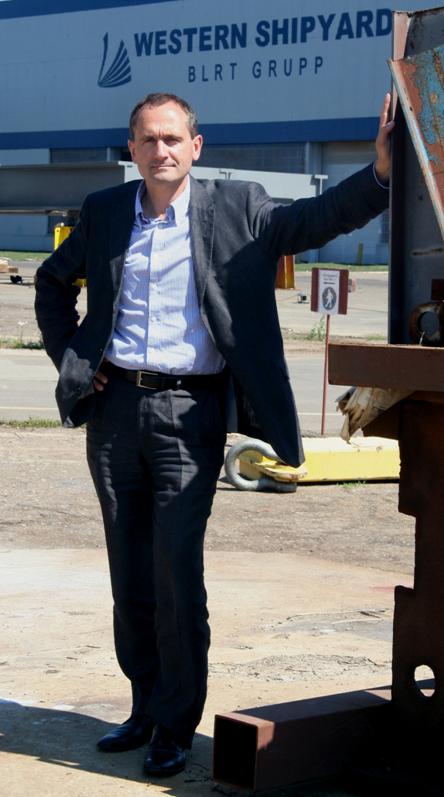
Western Shipyard’s General Director Arnoldas Šileika started to work as foreman
in the yard 22 years ago, when it still was under Soviet rule. He has been head of this
huge company since 2001, leading the transformation from Soviet times and thinking.
Western Shipyard’s General Director Arnoldas Šileika interviewed by Aage Myhre
aage.myhre@VilNews.com
I've been here before. I recall this as I pass through the guard building and the strict access control point that is the entrance to this huge shipyard furthest to the west in the Klaipeda port area. And well within the shipbuilding area, memories start flowing. I'm starting to remember details from my visit here 20 years ago, when the shipyard still was very 'semi-Soviet'.
I see the tremendously long, Soviet-like buildings, and walk along the one that is supposed to be the administrative headquarter. I finally get to the building’s end, closest to the sea, with a feeling of having gone back in time. But this feeling gradually fades as I get inside, climb the stairs to the 4th floor and walk into the corridors which are now colourful and nicely renovated, with pictures of new, modern ships and platforms on the walls. The pictures of Lenin and other communist symbols have miraculously disappeared since my last visit…
The secretaries in front of the general director's office still sit in the same reception room as by then. But now the dark, gloomy desktops are replaced with light, modern furniture, and the Soviet weightlifter-ladies have been replaced with beautiful and inviting young women, even speaking English very nicely…
And, believe it or not, the door to the general director's office is wide open! This time, there is no secretary humbly approaching the boss in his highness’ fortress behind armoured doors to ask if he graciously could accept to receive the visitor. No, now it’s the boss himself who comes smilingly out of the huge director-room, with an outstretched hand and a jovial 'welcome to our Western Shipyard! "
Hmm ... Times have obviously changed...

Western Shipyard started operations in 1969. The plan was that 9.000 people would work here.
Arnold Šileika pulls me into his office and offers a seat at the conference table in front of his desk. The tables are as large as they were 20 years ago, but now in modern, bright design. He offers me coffee, and I accept. But then I come to think that the last time I got coffee here I was served a strange sweet-sour mixture of sugar, water and coffee grounds that were almost impossible to mix into the water no matter how vehemently I used the teaspoon. Hairs rise on the back of my neck just by the thought.
But, of course, what is now being placed in front of me is obviously produced by an Italian coffee machine, and the scent is unmistakably genuine freshly brewed aromatic coffee.
My first question to the Director is related to the shipyard's history.
History – from Soviet colossus to European greatness
And Arnold Šileika is willingly telling me that the history of AB ”Vakarų laivų gamykla“ (VLG) – the Western Shipyard – started in 1966, when the construction started for a specialized ship repair yard very much directed towards Soviet’s huge fishing fleet. According to the project the yard would be the biggest and the most modern in Soviet’s northwestern region, also the biggest one in Klaipeda – with a 50 hectares territory, 3 km of quays, 100.000 square meters of production workshops and 9.000 employees.
The official opening of the Western Shipyard took place in 1969, and the first ship was put in a dock for repair that same summer 42 years ago.
The shipyard never became as big as forecasted, and in 1975 the company still had ‘only’ 2.600 employees repairing trawlers, refrigerators, plants, and fishing vessels.
After the downfall of the USSR, the huge fishing fleet became a burden for Lithuania. Ships were sold or written down to scrap. In 1993 the company restructured its activity and turned to repair of vessels from Western countries. Since then the company has been constantly strengthening its position in the markets, first of all in Western Europe.
AB "Vakarų laivų gamykla" was bought and privatized by the Estonian BLRT Grupp Concern in 2001. In 2003 the company was reorganized into the AB "Vakarų laivų gamykla" group with 23 companies within the activity fields of ship repair and modification, ship building, stevedoring and storage services, metal construction production, metal processing, hot galvanization, transport services, procurement, and more.
In 2010, Danish Odense Steel Shipyard sold its Baltijos Shiprepar yeard in Klaipeda to the BLRT Group, giving the group additional capacities, enlarging BLRT’s technical and logistical levels in developing shipbuilding in Lithuania and Estonia.
In 2007, Western Shipyard and the Norwegian company “Fiskerstrand Verft” established the joint company ”Fiskerstrand BLRT“ to deal with ship building, marketing, project management and more. The shipyard has since built several vessels for Fiskerstrand , together right now in the process of completing the construction of world's largest gas-powered ferry – for 600 passengers and 242 cars – for the Norwegian company Fjord1, one of the Norway's largest transport groups operating 63 car ferries, more than 500 busses and goods vehicles. This is one of the largest shipbuilding projects ever in Lithuania, with a total value of LTL 163.6 million (EUR 47,3 million).
Today - dramatic lack of workforce in Lithuania
Arnold Šileika has been working in the Western Shipyard since 1989, first as foreman, then as the company’s General Director for the last ten years. The company has now 2.000 employees, plus 1.000 more working on the territory for the shipyard on contract basis, totally 3.000 persons.
"You have, in other words, seen the whole transition from having been Soviet-ruled to becoming a Western company," I state.
And the director responds, still just as open and straight forward, that the biggest challenge has been to get workers to change their mentality from eastern to western ways of thinking.
"But now, today, the biggest challenge is actually to find people who want to work here," he says. "This despite the fact that we pay almost twice as high wages as what the labour market in Lithuania in general offers. We actually have had to start to bring in workers from Bulgaria and Romania to fulfill our obligations," he says.
Great importance for Klaipeda and Lithuania
The meeting with Arnold Šileika is nearing its end, and he invites me for a drive around the area that the shipyard disposes. The area is simply too big to cover on foot...
Aha, I think, now it’s probably soon time to again experience an authentic Soviet, black Volga with plush seats and curtains for the windows. The memories from 20 years ago have not let go yet, and I foresee a drive among rusting, sinking ship wrecks and a yard area full of old iron scrap, oil spills, creaking quay cranes and thousands of workers who are yelling at each other under the supervision of foremen who would make even the most hardened Soviet colonels to look bleak.
The director's car is a new Lexus, hybrid version ... The yard is dry, clean and tidy. The docked or moored vessels are all freshly painted and beautiful, almost exclusively from Western European countries. Nobody is yelling...
It finally begins to dawn on me that the Soviet times are over. That Lithuania has become a country with modern industry and service companies fully on a par with western countries.
The director's calm and professional voice reinforces this impression as he drives me around, explaining that my home country Norway is the most important partner for his Western Shipyard, but that he also supplies ships and other equipment to Denmark, Sweden, Finland, Germany, Netherlands, Italy and Russia. He says that the yard each year builds 10-12 vessels for these countries - ferries, tugboats, fishing and cargo vessels, plus boats and structures for offshore projects, and much more. He mentions especially a truly unique project that the yard completed two years ago; to build the jackup vessel Windlift 1 for an offshore windmill park. This was the largest project ever throughout the history of the Western Shipyard.
The shipyard also repairs different kinds of vessels, 100-120 every year.

The Jackup vessel Windlift I, completed in 2009, is the largest project ever throughout the history of Western Shipyard.
The General Director also tells me that Western Shipyard is the largest company in Klaipeda, also one of Lithuania's largest. He says that 90% of what the shipyard produces is exported, and that the company therefore is very important for the country’s trade balance and more. That also Klaipeda city enjoys very good benefits from the yard, that many families have their incomes from here, and that numerous shipyard partners in the west come here and leave important money in hotels, restaurants and shops.
“We are ready to accept many more contracts from Europe and other continents within vessel building or repairs. We can guarantee that we are competitive pricewise and that our quality is very high,” concludes General Director Arnold Šileika of Klaipeda’s Western Shipyard as he parks his Lexus just behind my car to see me off.
And I believe him. My initial expectation of finding a small Soviet spot here is gone. The director has convinced me that the company I now leave behind me is top modern, fully on par with shipyards in USA, Asia or Europe…

Western Shipyard’s General Director Arnold Šileika has reason to be proud of his company’s accomplishments.
- Bookmark :
- Digg
- del.icio.us
- Stumbleupon
- Redit it
- Posted by - (6) Comment
KLAIPĖDA MAYOR:
Klaipėda aims to become
an Eastern European
avant-garde city
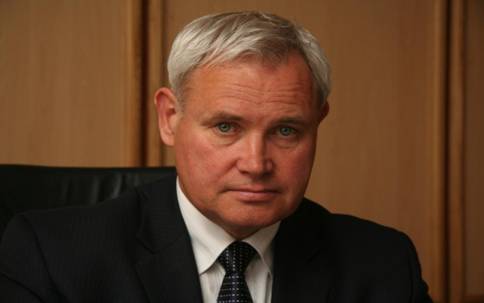
Mayor of Klaipeda, Vytautas Grubliauskas
The Mayor of Klaipeda interviewed by Aage Myhre
aage.myhre@VilNews.com
Congratulations with the post as Mayor of Klaipeda! Anything you can share with our readers about the municipal and mayor elections where the outcome was that you took over Klaipeda's main chair this spring?
Thank you. Klaipėda was always a stable and trustful city. Recent elections proved that those adjectives are true. Democratic transition in Kaunas and Vilnius was indecisive until last night or even during the mayoral voting session. Meanwhile here in Klaipeda a prospective coalition started work planning for a 4 year term already after the municipal election night. This stability brings a lot more clarity for citizens and administration.
What can you tell our readers about today's situation and the outlooks for the economy of Klaipeda?
Recession in Klaipeda lasted much shorter than in other cities. Thus it's still present in real estate sector, we bounced quickly back in other sectors. We kept quite stable consumer demand due to Klaipeda's large workforce share (appr. 40%) employed in harbour related activities that hardly experienced recession. Positive economical outlook for local companies continued city economy running in difficult times. For future, I see much unused capacity in harbour and free economical zone activities that are already best performers in whole Baltics. On the other hand I watch with uncertainty demographic decline as most difficult macroeconomic challenge for municipal budget and consumer demand. We have to cope with a shrinking city scenario.
Klaipedos Nafta is in the process of building the first LNG import terminal on the Eastern Baltic coast, for use in Lithuania and potentially for export to its Baltic region neighbours. Lithuania intends to become one of the first European countries to implement the European Union's Third Package of energy market reforms, which would result in the creation of a free and open energy market similar to what now exists in the U.S. The development of the Klaipeda LNG terminal is said to be a critical component in the plan to open the energy markets in the Baltic region. What can you say about these plans?
Klaipėda is a logistical gateway for East-West corridor, therefore our participation is self-evident. The planned LNG terminal has become a national geopolitical priority and our city will help to install it. Meanwhile as a citizen and mayor I understand the potential hazards. Although we would like to apply so called NIMBY rule (‘Not In My Back Yard’) for necessary but unwanted infrastructural objects, Klaipėda will welcome this terminal and get full package of security precautions and decent compensation for it. That’s the demand from the city.
There have been plans to create ‘a waterfront oasis’ at the territory that till now has been part of Klaipeda’s port area, on both sides of the river Dane estuary. The project was showing a better connection between Klaipeda Old Town, the cruise ship port and the Baltic Sea – for multifunctional purposes with shops, offices, apartments and green outdoor areas in direct contact with the sea. What is the stage of this project now?
Eventual projects have a symbolic meaning. They are first public access points to lagoon in former access forbidden harbour. At the same time, we hope this brownfield investment will encourage other infill developments. Yet, both waterfront projects are in post recession phase with real estate sector specific issues. The supply of such quality locations is unique in Klaipėda, therefore I hope these projects will jumpstart very soon. This will introduce totally new centrality for Klaipėda.
“Klaipeda faces difficulties in attracting cruise vessels, loses to Riga and Tallinn.” These have been headlines in local newspapers this spring. Is that true and what can in case you and the Klaipeda port authorities do about it?
Yes indeed, there is a small decline for cruise vessels this year. But very proactive discount schemes, introduced by Ministry of Transport in early winter, allow me to interpret this decline more as a prolonged recession in cruise business rather than our wrong policy. At the same time, although Klaipėda is really striving to become Lithuanian Barcelona or Miami, our size and brand is weaker than neighboring capital cities Riga and Talinn.
“Lithuanian tourism sector is haunted by poor leadership.” This said a VilNews writer in an article recently (https://vilnews.com/?p=5217).Are you planning to do something about the situation, and to make the tourism sector in your region more organised and more attractive for visitors?
Already during my first month as a mayor I organized meeting with mayors of 6 neighbour regions in order to discuss common strategy to revive tourism in Western Lithuania. The first and foremost goal is to bring new flight directions to Palanga-Klaipėda airport. We also agreed to brand the region as one unit instead of fragmented marketing. Already this summer we bring all summer events in Klaipėda under one unified advertisement campaign.
A new, extended activity field for our VilNews e-magazine, is to invite groups of people with some sort of interest in Lithuania to travel here on so-called theme-tours. We are in the process of preparing a trip for a group with interest in traditional Lithuanian food (https://vilnews.com/?p=5176), another one for people with interest in the very interesting connections between India and Lithuania (https://vilnews.com/?p=4425) , and a third one for readers of Ruta Sepetys’ bestselling novel “Between shades of gray” (https://vilnews.com/?p=2197) to come here and see and learn more about the Siberia deportations from Lithuania during WWII. Would you and the Klaipeda Municipality be interested in a cooperation?
Of course, any idea is worth to be supported. As a jazz singer I am most fond of jazz tours, which from time to time I could even guide myself. Lithuania and Klaipėda has much to offer.
One of the biggest problems that Lithuania faces today is violence against women. Statistics claims that 63% of all women in Lithuania suffered from physical and/or psychological violence, whereas world average is 33%. I have been told that Klaipeda municipality wants to be a pioneer-municipality in terms of focus on domestic violence and abuse of women. Your city has for years had a women's shelter for women, but has now taken a huge step forward and is already well underway with the planning of what is probably going to be Lithuania's most modern and advanced crisis centre for women, expected ready built in early 2012 (ref. https://vilnews.com/?p=3571). How do you see that Klaipeda can be a good example for other Lithuanian municipalities with regards to this very severe problem?
Thanks to funds from Espersen Foundation, Klaipėda becomes a pioneer in this social blind spot. What we will see with rise of this building is not a problem solution, only a shelter for severe societal problems. Although the shelter is extremely needed, Klaipėda will never be an example if violence will persist. Therefore I see immediate need for social evolution towards extermination of violence against women in general. For that we need awareness campaigns and education from early school age. Only with such package of measures I will be able to call Klaipėda as good example for other municipalities.
The Klaipeda city court has acquitted a group of ‘history enthusiasts’ for using posters with swastikas on them during the Independence Day parade on 16 February in Klaipeda. The court on 18 May ruled to terminate the administrative case against the four youth on grounds that the Swastikas used on the posters were photographs of an archaeological finding in Lithuania and initially the swastika was the sign of the sun. “These are not Nazi symbols, but valuable symbols of the Baltic culture. The symbols of our forefathers, which were taken away, fabricated and crippled by other nations. It is not fascism, but the architecture of the universe that they represent,” Milvydas Jusakauskas, the defence counsel’s witness from Vilnius said after the court hearing. What are your comments to this?
Comments on court decisions exert political pressure and I will avoid it. But despite this legal case, I want to cheer readers of “VilNews” that Klaipėda has not had any serious racially or ethnically biased criminal actions towards non-Lithuanian guests for years. Nor do I have information about neo-nazis or gangs operating in town. On opposite, Klaipėda has very peaceful community life.
Lawmakers in Lithuania's Committee on Legal Affairs, under the leadership of MP Petras Gražulis, voted recently to make even more stringent censorship legislation against homosexuals in this country, saying that they should be able to fine people for the "propagation of homosexual relations" in public. This has earned condemnation from EU groups who say this is just another step in furthering an ultra conservative agenda in Lithuania. How gay hostile can Lithuania become before someone starts appealing to normal common sense?
Opposite to any former mayors of Vilnius and Petras Gražulis himself, Klaipėda, and I personally, welcomes gay prides and gay communities. The whole idea of censorship is based on ridiculous logics, as psychologist O. Tapinas said once correctly “if you observe birds for a while you will become bird yourself”. I think we are talking about so called “10% society” and the rest 90% can’t be “persuaded” into homosexuality. Denial will only increase frustration in society.
I have heard said that if Lithuania’s politicians and bureaucrats were half as interested in the country they are supposed to serve as in their own pockets, this would already have been a fine, prosperous country. Fraud, corruption, briberies, lack of teamwork and transparency have all too often become terms used while describing the way Lithuania is managed. Do you have any clean-up plans ready?
Clear bureaucratic rules, short deadlines, e-government, well managed outsourced functions and motivated workforce is a key to more transparent municipal services. I see lots of space for improvement in Klaipėda. Biggest expectations I have towards introduction of electronic tender system and HR department.
Finally, please let our huge, international VilNews readership know what are your visions and plans for Klaipeda and the Baltic Sea region over the years to come?
I will strive for Klaipėda to become an Eastern European avant-garde city in life quality and culture. For many years we had wrong priorities. Now it is time for pure living and jazzy souls.
Greeting to sister cities by mayor of Klaipėda Vytautas Grubliauskas.
- Bookmark :
- Digg
- del.icio.us
- Stumbleupon
- Redit it
- Posted by - (3) Comment

Radisson Blu Hotel, Klaipėda:
Retreat to elegant
seacoast luxury!
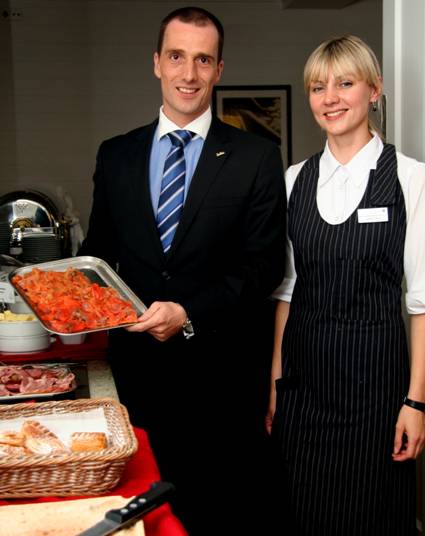
General Manager Tobias Ammon is rightly proud of the breakfast buffet that
Radisson Blu Hotel offers its guests. Here with waitress Kristina.
The Radisson Blu Hotel in Klaipeda has just celebrated its first ten years as the only truly international luxury hotel at Lithuania’s beautiful seacoast. Two months ago the hotel got a new General Manager, German Tobias Ammon (35), and I am sitting down with him in the hotel’s breakfast room this early July morning to let him explain to you, dear readers, why you should visit Klaipeda and his hotel – this summer as well as when the autumn winds already make the endless Baltic Sea waves powerfully roll in towards the port city shores.
“I must admit that I had to ask where Klaipeda is when I was offered this position, but I was astonished to see what a nice area this is, when I first came here,” tells the young manager, who now has moved here with wife and little daughter. He and his little family are now in full swing “testing Klaipeda as travel destination”, and they are using their bicycles to do exactly that!
“This area is really ideal for bikes, and we are now using our weekends to bike to the fantastic beaches in the outskirts of the city, riding through beautiful coastal pine tree forests, villages and over the wavy, green landscapes that characterise this area,” he tells.
To my question why people should come to visit this seaside town and district, Tobias answers: “First of all because of the experience. Klaipeda is still kind of a genuine, untouched place, and there is a lot to discover for those who haven’t been to this part of Lithuania or Europe. The genuine Old Town in Hanseatic style, the river, the yacht harbour, the beautiful nature, the smell of sea, combined with a long and interesting history starting in the 13th Century. In addition, Klaipeda is centrally located between the resort areas of Neringa and Palanga, The ferryboat trip over to Neringa (the Curonian Spit) takes only a few minutes. The Palanga resort town and international airport is only a 20 minutes drive from here. So this is really an ideal, central location for those who want to experience the beautiful Lithuanian seashores.”
“I agree that the summers in Lithuania are nothing but fantastic. The long, white, soft and sandy beaches that surround Klaipeda both to the north and west makes this a truly ideal summer paradise, but what about the autumn, winter and spring seasons out here at the coast? What can you offer our VilNews readers when this area again turns rainy or snowy and the icy Baltic Sea winds are whipping the faces of all those walking around in bowed positions to avoid being blown over?” I ask.
“Let me first say that our hotel has several corporate clients, many representing companies and organizations dealing with the Klaipeda harbour, shipyards or other sea related activities. They represent our core business. But let me also say that I am eager to get in touch with companies or organisations considering a seacoast seminar or conference. We can accommodate up to 100 delegates in our meeting rooms and we have 74 elegant guest rooms with all you expect from a branded high class hotel.” Tobias sounds very convincing when he describes all the advantages of the hotel and of Klaipeda as conference destination even during the colder seasons.
“What about weekend offers for people living in the Lithuanian inland cities or in other European countries?”
“Our hotel can offer excellent weekend packages for individuals and families. Just call us! In addition to the 74 rooms we also have fitness facilities and a steam bath. We have rooms for entertainment or meetings, a well assorted bar, and a restaurant that is famous for its delicious meals for all tastes and desires.
So why not follow his advice and go for a seaside experience next time you plan for a seminar or a team-building event in your company or organisation? Or simply for some days off, deeply breathing the refreshing sea air out here...
Palanga International Airport has direct flights from Copenhagen, Oslo, Riga and Moscow. There are ferries connecting Klaipeda with Sweden and Germany. Or you can come by train, bus or your own car. The excellent motorway between Vilnius and Klaipeda makes the 300 km trip a pleasant three-hour experience only...
To talk with Tobias Ammon feels very refreshing. One can easily feel that this is a gentleman full of ideas and energy that surely will be for the benefit of Klaipeda and the Radisson Blu hotel.
But despite his rather young age, Tobias is a man with a very impressive record of experience. Born in Germany, not far from Berlin, growing up in the seaside city of Rostock, moving to the Black Forest area to start in the hotel business already as a 20-year youngster, and since then learning the trade and ‘climbing the ladder’ in several German hotels, as well as in Austria, England and St. Petersburg, Russia, before coming to Klaipeda as General Manager of Radisson Blu.
“Already as a child I loved to entertain, make shows, prepare dinners and so on. For my parents and others. So it was probably not strange that I chose the hotel business, first of all within the so-called ‘food and beverage’ segment of the business.”
“I simply love to meet people,” he declares as his conclusion to our little chat at the hotel’s breakfast table this morning.
Text: Aage Myhre
aage.myhre@VilNews.com
|
|
|
|
|
|
- Bookmark :
- Digg
- del.icio.us
- Stumbleupon
- Redit it
VilNews e-magazine is published in Vilnius, Lithuania. Editor-in-Chief: Mr. Aage Myhre. Inquires to the editors: editor@VilNews.com.
Code of Ethics: See Section 2 – about VilNews. VilNews is not responsible for content on external links/web pages.
HOW TO ADVERTISE IN VILNEWS.
All content is copyrighted © 2011. UAB ‘VilNews’.

 Click on the buttons to open and read each of VilNews' 18 sub-sections
Click on the buttons to open and read each of VilNews' 18 sub-sections 





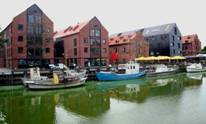



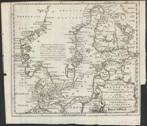
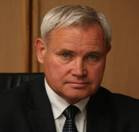
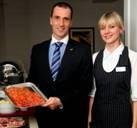
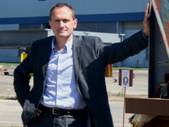
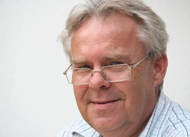
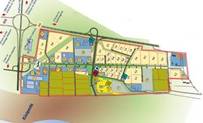

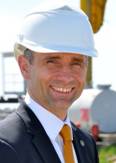
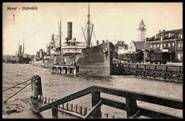




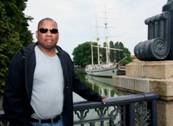












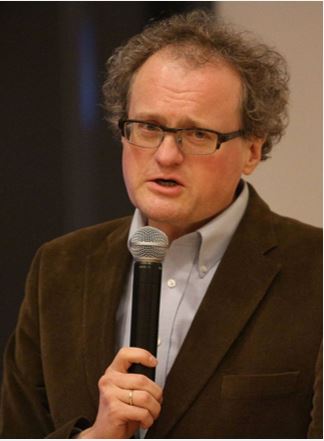
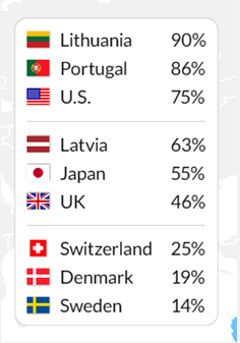
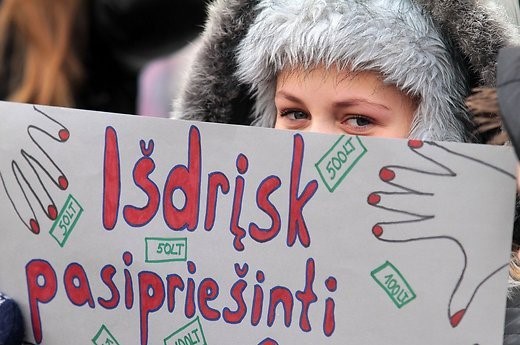


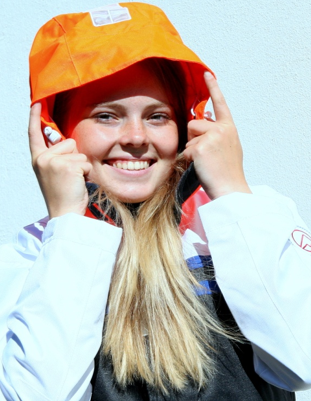
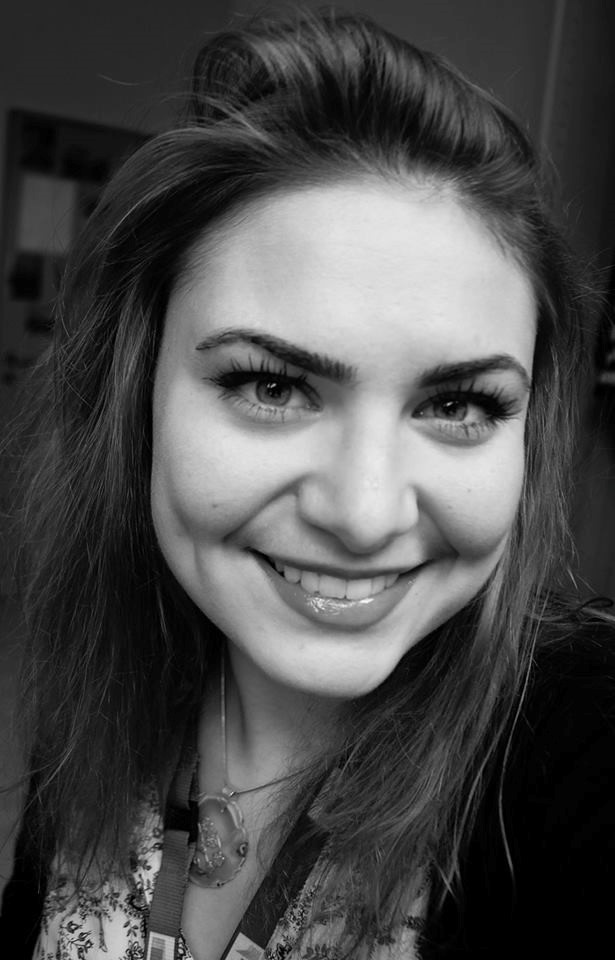
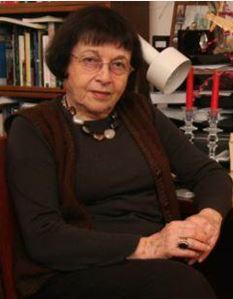
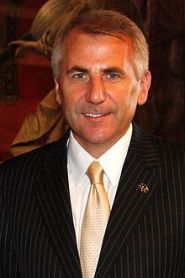
.jpg)
